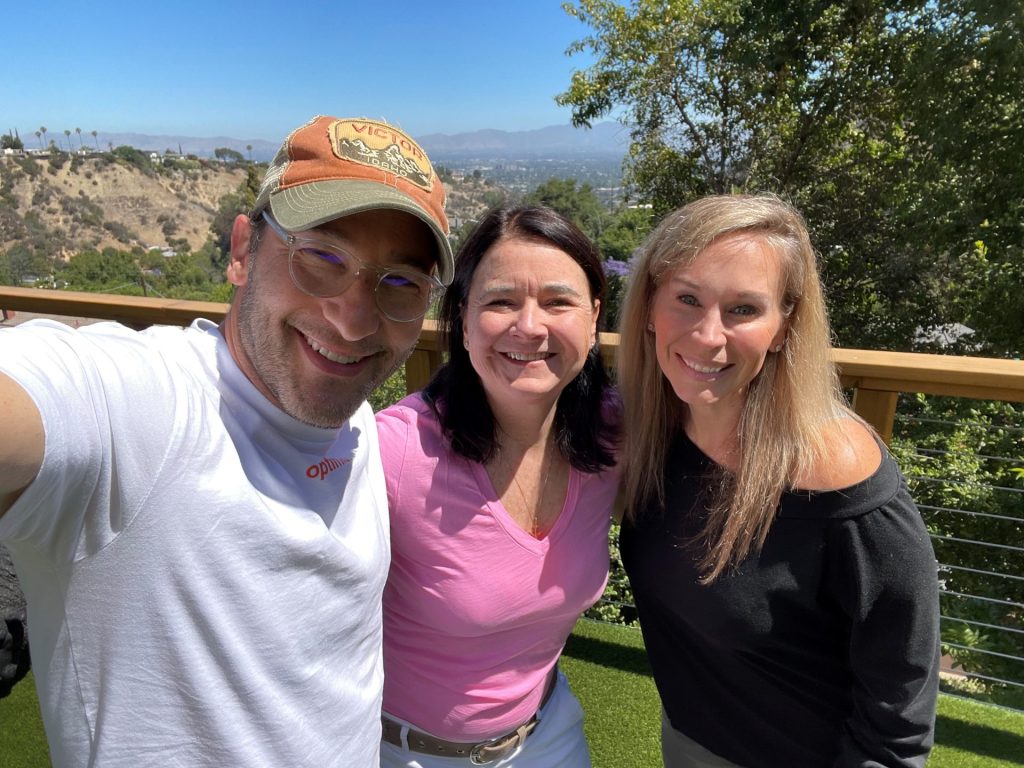Friends On and Off the Job
03 Dec 2021
Two police chiefs in Boulder support each other while aiming to increase transparency and community collaboration in local police work.
By Christine Mahoney
In our darkest hour, she was there for me ... and I will never forget that,” recalls Boulder Police Chief Maris Herold of her fellow public safety leader, friend and confidant Chief Doreen Jokerst of the University of Colorado Police Department (CUPD). Herold says Jokerst was the first person to call and offer help—both emotional and personnel—during and in the aftermath of the March 2021 shooting at the Table Mesa King Soopers that killed 10 people, including Boulder police officer Eric Talley.
Herold was less than a year on the job when the shooting devastated the Boulder community, but she had already formed a supportive relationship with Jokerst, who was on the interview committee that secured Herold’s leadership position. “I knew she was the right person for the job,” says Jokerst. “In the interview, I really drilled down on the issues, looking for more than surface-level answers. Maris blew everyone out of the water. She’s not just talk.”
The women are leading their respective police departments during a time of national calls for police reform in the wake of George Floyd’s death at the hands of police near Minneapolis in May 2020. Their commitment to inclusive, community-centered policing led them to California this past summer, where they met and collaborated with bestselling author Simon Sinek. Both chiefs subscribe to Sinek’s leadership philosophy, which emphasizes the importance of transparency and trust, tenets highly valued by those calling for police reform. Both chiefs are also founding members of The Curve. Started by Sinek, The Curve is a diverse group of modern, forward-thinking leaders dedicated specifically to law enforcement to enhance policing culture and reinvigorate community relations.

Leading Women
Enacting change is nothing new for Herold, who won an award in 2016 for her work on Cincinnati’s Collaborative Agreement, a document born out of civil unrest in the city in 2001, when a 19-year-old unarmed Black man was shot and killed by a Cincinnati officer. The agreement has become a national framework for the future of policing, focused on transparency and respect, evolving into a never-ending conversation between police and the communities they serve. When yet another unarmed Black man was shot, this time by University of Cincinnati police in 2016, Herold became chief of the university’s police department. She led it through hundreds of reform recommendations, improving the department’s reputation in a community with a long history of distrust in police.
For her part, Jokerst has launched several diversity initiatives at CUPD, including the creation of an oversight board that provides student input into the department’s recruiting and hiring processes. Jokerst says she often taps Herold for her campus policing expertise. “I’ll ask her, ‘Did you do this at your university, and how did it work?’ She’s been a great mentor.”
Similarly, Herold says she’s benefited from the network Jokerst had already built in Colorado, having come from the municipal Parker Police Department, where she worked for nearly two decades. “Doreen is well-respected and a wonderful leader with high emotional intelligence,” says Herold, who found a kindred spirit in Jokerst. “We think alike.”

Paving the Way
The two chiefs are quick to point out that there are currently three female police chiefs in Boulder County, including Chief Kimberly Stewart in Erie. “It’s important that women take these leadership positions,” says Herold. “In a time of crisis, women lead differently—they think differently. Women are problem solvers, willing to collaborate, even with people who don’t like police.” Jokerst, a mother of two girls, is committed to increasing the number of women who see policing as a career choice. Both Herold and Jokerst are involved with the national 30x30 Initiative and have taken the 30x30 pledge to help advance the representation of women in policing. The goal is to increase police recruits to 30 percent female by 2030. (Currently, women make up only about 12 percent of sworn officers and 3 percent of police leadership in the U.S. At CU Boulder, it’s higher, with women making up about 17 percent of its total corps.)
On a personal level, the chiefs engage in friendly competition when out of uniform. Herold played basketball in college, so Jokerst knows to steer clear of her friend on the court. But boxing? “Oh, she knows I’ll beat her,” laughs Jokerst. The friends also enjoy dinners together with Doreen’s husband and Herold’s partner. Moving to a new community in the midst of a pandemic wasn’t easy for Herold, but Jokerst, who lives in Parker, helped her adjust to life in Colorado.
Both chiefs acknowledge this is a pivotal time for policing and community relations. There is a crisis around trust in policing with use of force and transparency at the center of it all. Herold says as women, they can offer a more empathetic viewpoint while maintaining strong leadership. “Policing is a different field. Toughness is expected,” she says.
But she’s also realized that letting her vulnerable side show can be a good thing. “Women place the sanctity of human life at the center of everything. And right now, that’s really important. That’s how we will mitigate this crisis.”












